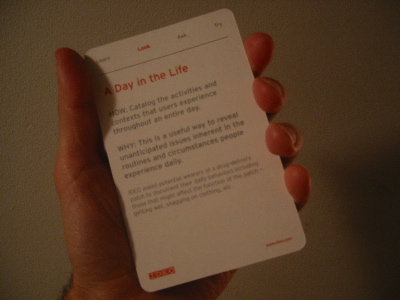The One Number You Need to Grow by Frederick F. Reichheld is a great, short article on using one-question surveys that measure loyalty correlated with customer behavior. Highlights:
‘Every month, Enterprise polled its customers using just two simple questions, one about the quality of their rental experience and the other about the likelihood that they would rent from the company again. Because the process was so simple, it was fast. That allowed the company to publish ranked results for its 5,000 U.S. branches within days. …the company counted only the customers who gave the experience the highest possible rating…By concentrating solely on those most enthusiastic about their rental experience, the company could focus on a key driver of profitable growth: customers who not only return to rent again but also recommend Enterprise to their friends.’
‘In most of the industries that I studied, the percentage of customers who were enthusiastic enough to refer a friend or colleague — perhaps the strongest sign of customer loyalty — correlated directly with differences in growth rates among competitors.’
‘Companies have tended to focus on customer retention rates, but that measurement is merely the best of a mediocre lot…they basically track customer defections’
‘For a while, it seemed as though information technology would provide a means to accurately measure loyalty. Sophisticated customer-relationship-management systems promised to help firms track customer behavior in real time. But the successes thus far have been limited to select industries, such as credit cards or grocery stores, where purchases are so frequent that changes in customer loyalty can be quickly spotted and acted on. ‘ – Behavior is difficult to study and quantify, lots of data might help.
‘My personal bet for the top question (probably reflecting the focus of my research on employee loyalty in recent years) would have been "How strongly do you agree that [company X] deserves your loyalty?" Clearly, though, the abstract concept of loyalty was less compelling to customers than what may be the ultimate act of loyalty, a recommendation to a friend.’ – This question raises the same kind of emotion that occurs during real behavior, and might help explain why it’s a better indicator of behavior.
I like how he used a 10-point scale then clustered the results into three types of customers, avoiding “grade inflation.”
Also see the Loyalty Acid Test.
